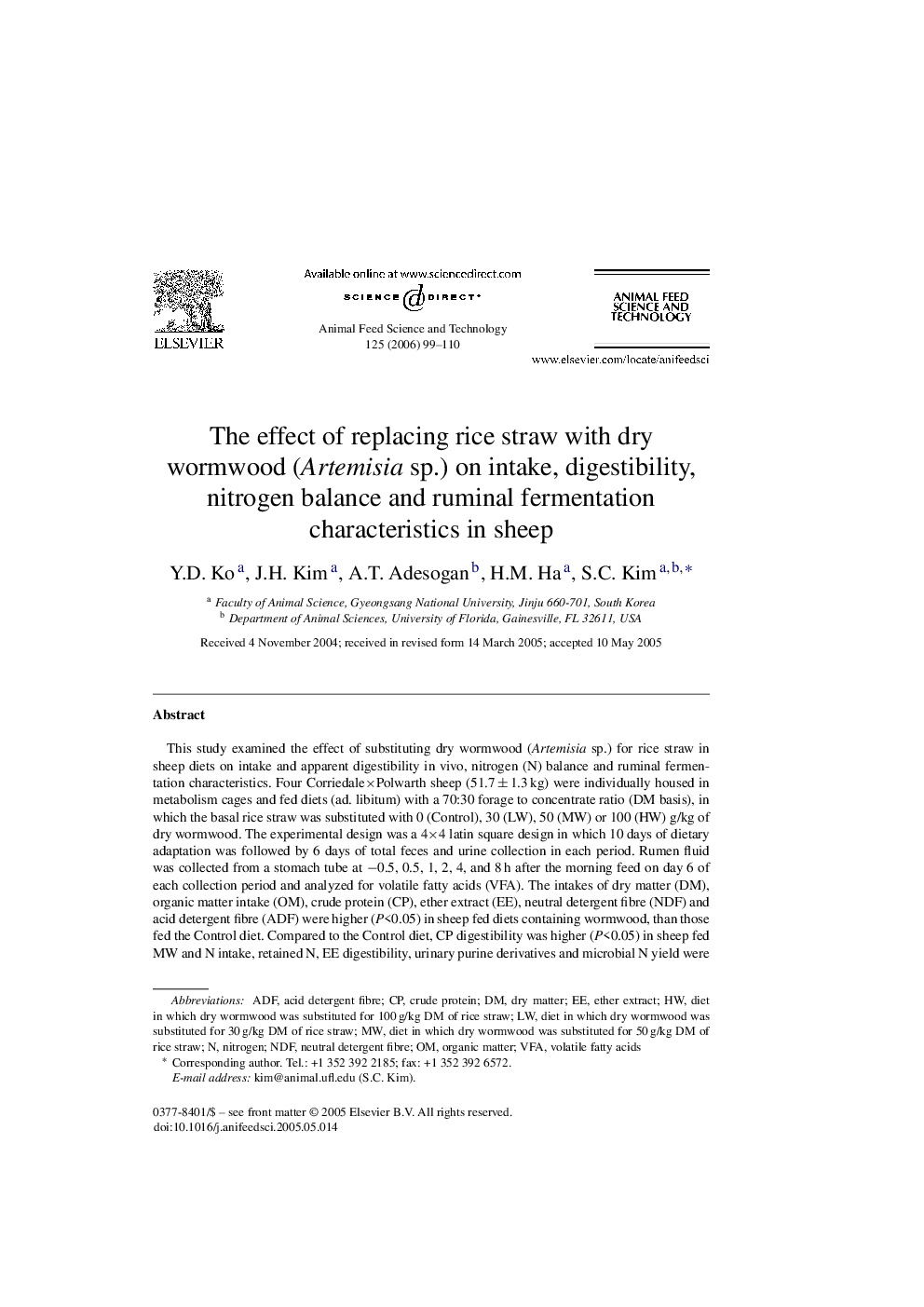| Article ID | Journal | Published Year | Pages | File Type |
|---|---|---|---|---|
| 2421296 | Animal Feed Science and Technology | 2006 | 12 Pages |
This study examined the effect of substituting dry wormwood (Artemisia sp.) for rice straw in sheep diets on intake and apparent digestibility in vivo, nitrogen (N) balance and ruminal fermentation characteristics. Four Corriedale×Polwarth sheep (51.7 ± 1.3 kg) were individually housed in metabolism cages and fed diets (ad. libitum) with a 70:30 forage to concentrate ratio (DM basis), in which the basal rice straw was substituted with 0 (Control), 30 (LW), 50 (MW) or 100 (HW) g/kg of dry wormwood. The experimental design was a 4×4 latin square design in which 10 days of dietary adaptation was followed by 6 days of total feces and urine collection in each period. Rumen fluid was collected from a stomach tube at −0.5, 0.5, 1, 2, 4, and 8 h after the morning feed on day 6 of each collection period and analyzed for volatile fatty acids (VFA). The intakes of dry matter (DM), organic matter intake (OM), crude protein (CP), ether extract (EE), neutral detergent fibre (NDF) and acid detergent fibre (ADF) were higher (P<0.05) in sheep fed diets containing wormwood, than those fed the Control diet. Compared to the Control diet, CP digestibility was higher (P<0.05) in sheep fed MW and N intake, retained N, EE digestibility, urinary purine derivatives and microbial N yield were higher (P<0.05) in sheep fed diets, containing wormwood. Rumen pH was unaffected by treatment. Rumen NH3-N and VFA concentrations were similar across treatments except that most values for diets containing wormwood were higher (P<0.05) than those for the control diet within the first 2 h of feeding. The non-glucogenic acid ratio was also similar across Control, LW and MW treatments, but it was generally lower in MW versus the Control treatment. In conclusion, substituting wormwood for rice straw in the sheep diets increased feed intake, rumen fermentation, in vivo digestibility, N retention and microbial N yield, particularly at the medium and high levels of wormwood inclusion.
